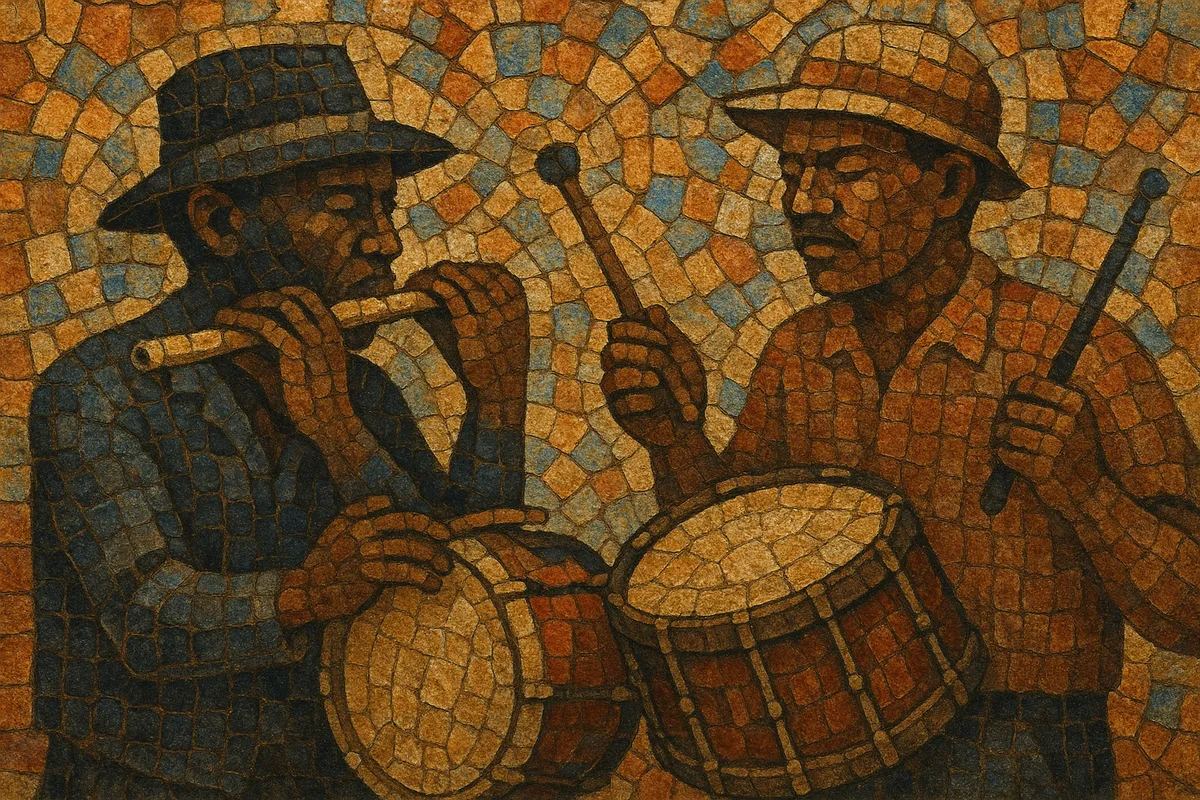
Fife and drum blues is an African American rural dance music from the North Mississippi Hill Country that combines the earthy pulse of hand‑played drums with improvised melodies on a cane fife. Unlike the guitar‑centered Delta blues, it emphasizes trance‑like grooves, call‑and‑response, and marching rhythms adapted for picnics, parades, and outdoor gatherings.
A typical ensemble features a cane fife leading over a bass drum and one or two snares, creating interlocking polyrhythms. Tunes often rework spirituals, work songs, children’s chants, and blues themes into modal, pentatonic riffs, producing a raw, communal sound designed for dancing and celebration.
Fife and drum blues arose in the 1800s among African American communities in the North Mississippi Hill Country. It blended West African rhythmic practices and call‑and‑response with Euro‑American fife‑and‑drum marching traditions. Rather than formal military music, the style became a festive, community soundtrack for picnics, barbecues, and parades.
Field recordists such as Alan Lomax documented the music in the mid‑20th century, capturing seminal performances by Sid Hemphill (1942) and the Young brothers (Ed and Lonnie) in the late 1950s–early 1960s. These recordings revealed a repertoire that transformed spirituals, work songs, and blues motifs into driving dance pieces.
In the Como/Senatobia area of Mississippi, bandleaders like Napoleon Strickland and Otha (Othar) Turner sustained the tradition at local picnics and "goat roasts." The music remained largely regional and participatory, closely tied to social gatherings rather than commercial circuits.
Commercial releases such as Otha Turner’s "Everybody Hollerin’ Goat" (1998), appearances in film soundtracks (e.g., "Shimmy She Wobble" in Gangs of New York), and collaborations with roots and blues‑rock artists (e.g., North Mississippi Allstars) brought wider attention. After Otha Turner’s passing in 2003, his granddaughter Shardé Thomas continued leading the Rising Star Fife and Drum Band, ensuring the music’s living continuity on festival stages and at homecoming picnics.

